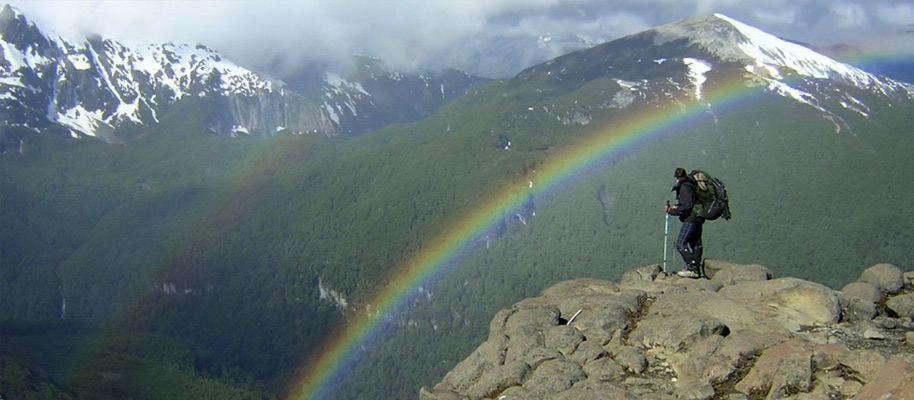The more information we get about the place where we are heading (terrain/trail condition, infrastructure, topography, distances, etc.) and the forecasted meteorological conditions, the more efficiency we will have at choosing only the indispensable to put in our backpack on each occasion, avoiding to carry ¨just in case¨ stuff we won´t use and could start decreasing our comfort after the first few miles.
LESS WEIGHT = MORE PLEASSURE
The weather forecast services available today are very accurate and accessible. For the Meiling Refuge it is best to check a forecast for the corresponding altitude (6200 feet) since due to the great altitude gain and the absence of vegetation on the upper third of the trail, the weather conditions could change extremely between start and finish. It is also necessary to see how the weather will be during all the time the excursion lasts. There could as well be slippery mud on the trail and/or snow on the upper part of the itinerary. In low temperatures it is crucial to protect the hands and head. see weather forecast
Based on this information we can decide what kind of shoes and clothing we will need, for example, if a raincoat and warm clothes will be necessary or if just a shirt will be enough.
If there is snow, we will have to consider that it´s texture changes with the meteorological conditions and the use of special shoes, gaiters or snowshoes could be necessary. In any case, it always helps or it could be indispensable to have at least one walking pole with a basket to walk on the snow.
In case it rains we must know that most backpacks won´t protect our gear from getting wet. It is necessary to protect, especially, our sleeping bag and extra clothing inside well closed plastic bags. All that gets wet will be, apart from useless later, a much heavier load to carry.
If the shoes we are planning to wear were stored for a long time or next to a heat source, we must check them before we use them because the sole could come off during the walk.
We should always carry: a bottle for water or hydration system, good quality sunglasses and sunscreen (mandatory on snow due to its high reflection index), sun hat and warm hat, a small torch with enough power to walk at night on mountain terrain, adhesive tape to prevent eventual blisters, garbage bag, comfortable extra clothes for hanging around at the refuge.
Backpacks made to walk in the mountains have a padded belt with an adjustable buckle in order to place most of the load on the waist bones. This way we don´t overload our back and improve our balance while walking. The shoulder straps can be also padded but their function is not to carry weight but to keep the pack close to our back. We have to make the adjustments so it works this way.
We must also try to use all the internal space of the backpack since all we carry outside or hanging will worsen our balance, especially when it is windy. Backpack covers can be useful but must be well attached to avoid losing them in windy conditions.
The way we distribute the weight inside the pack is also important for our comfort and to reduce the strain. The best is to have all that is bulky and lightweight, such as the sleeping bag, at the bottom, while the heaviest items, such as water and food, should be closer to our back and at the upper part. All the small stuff and things we need at hand can be put in the backpacks upper cover pocket.
